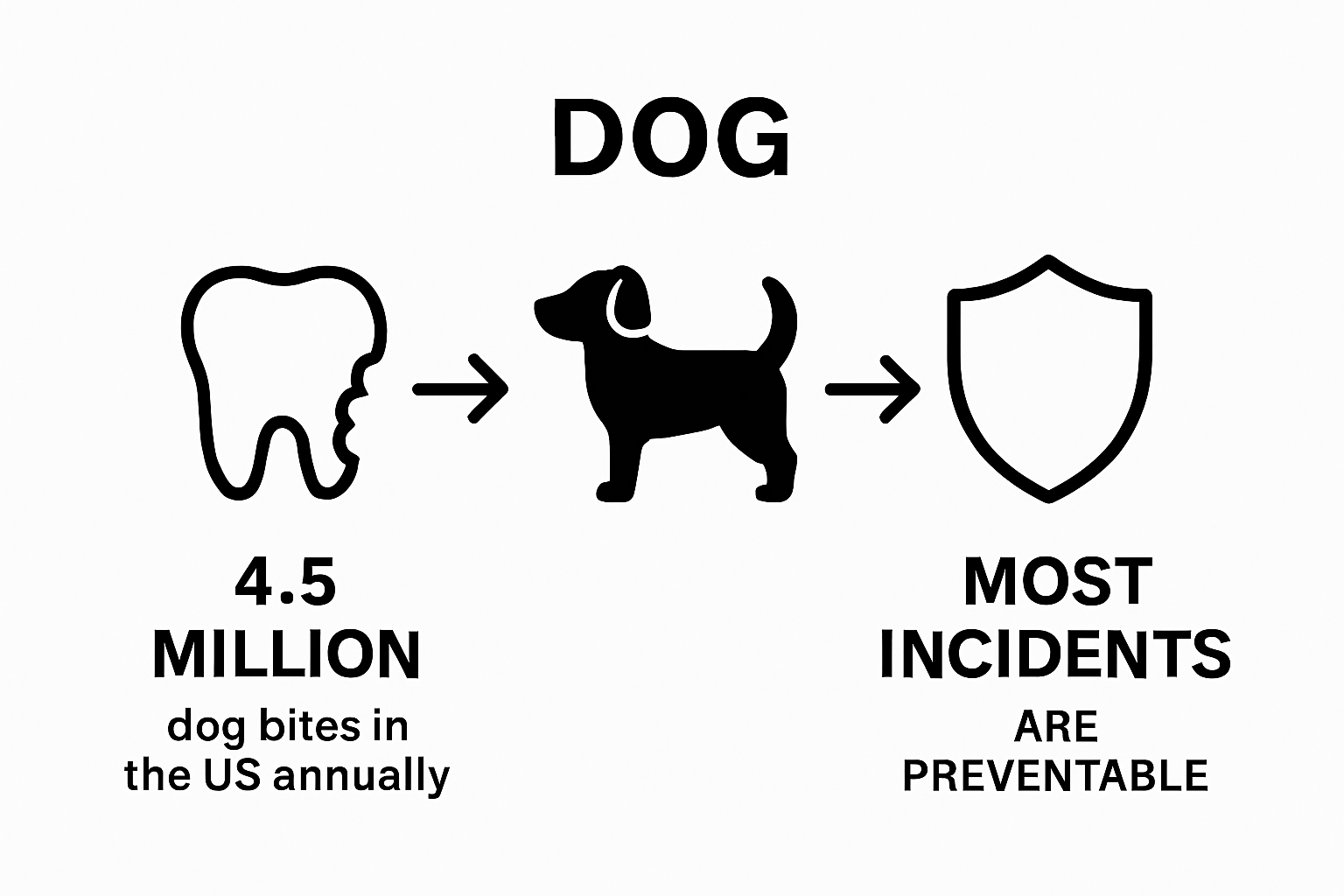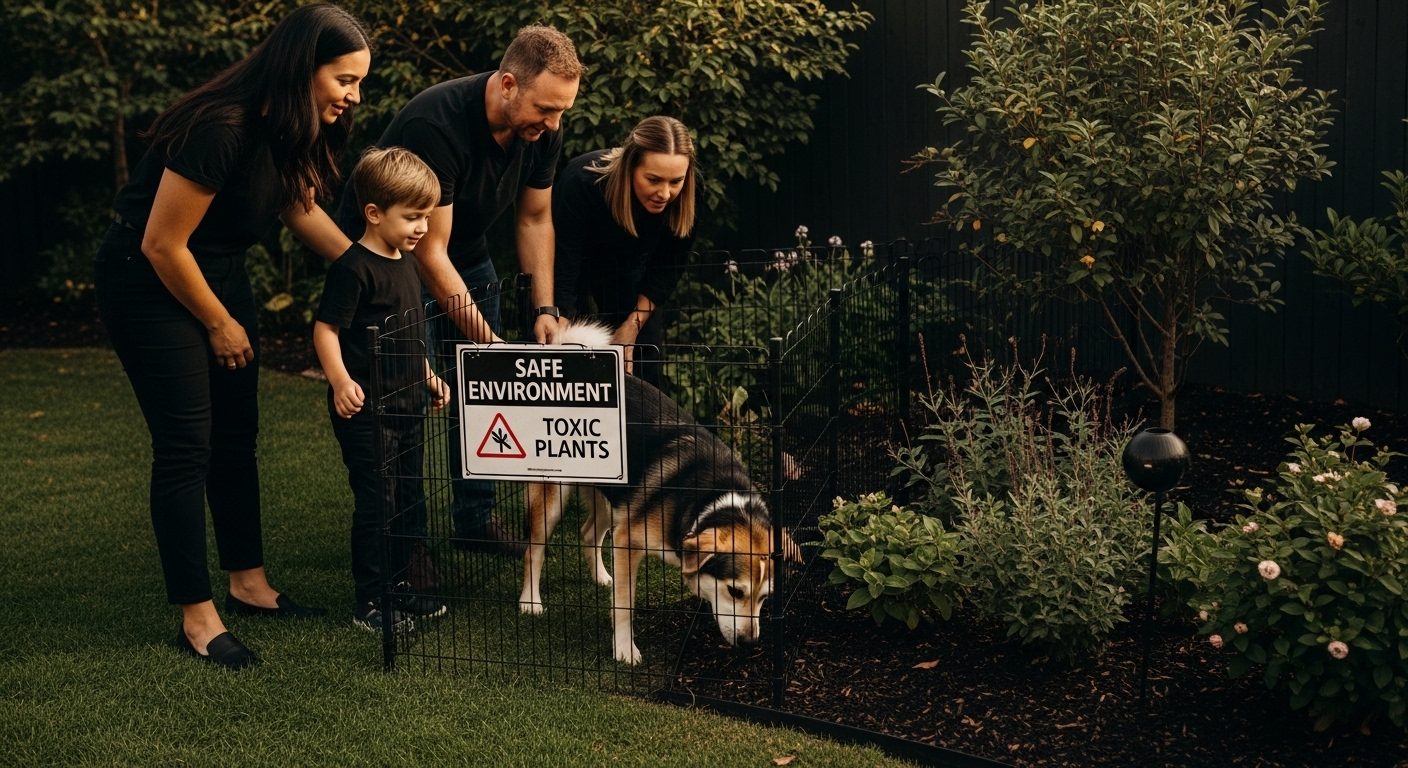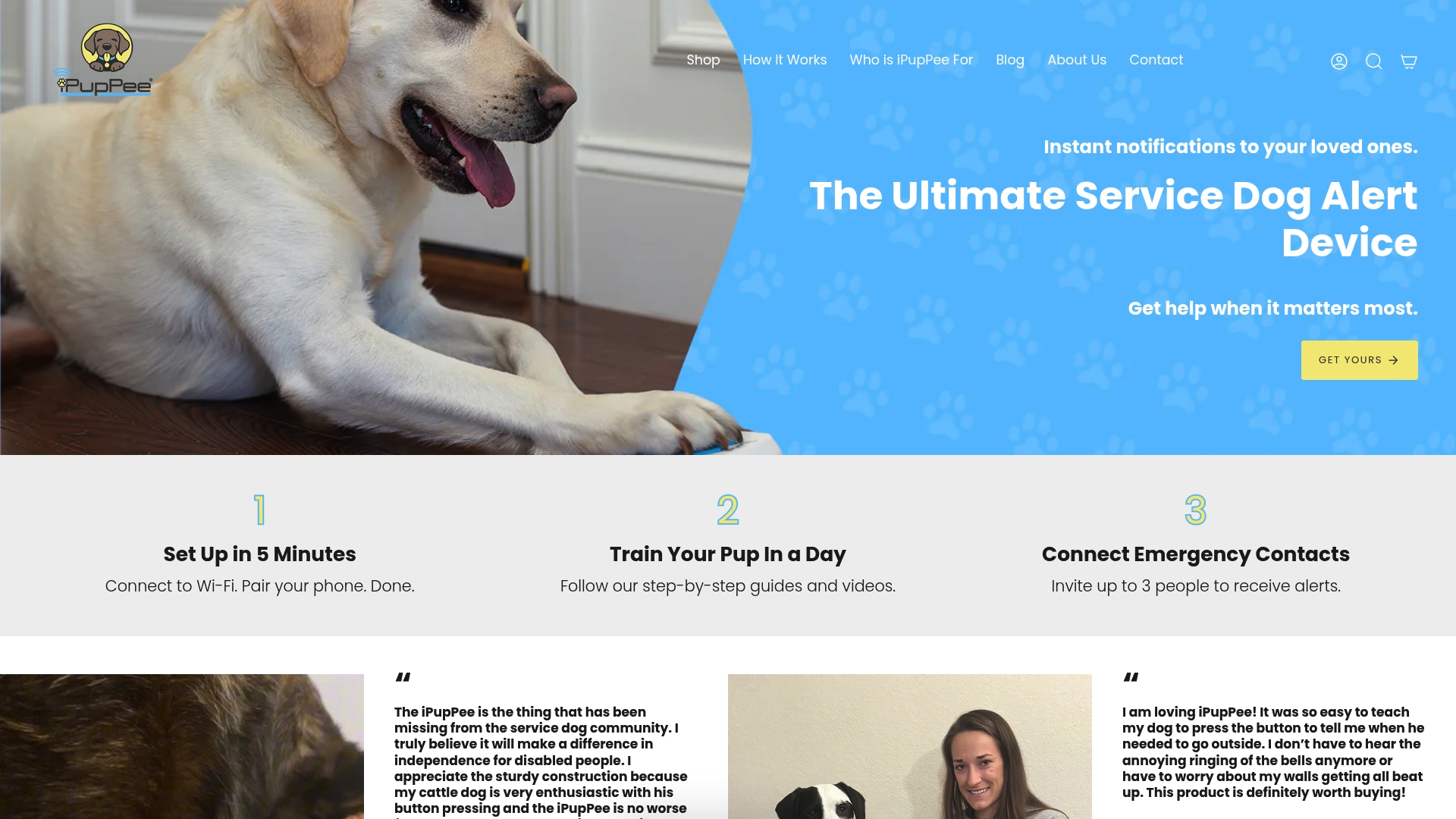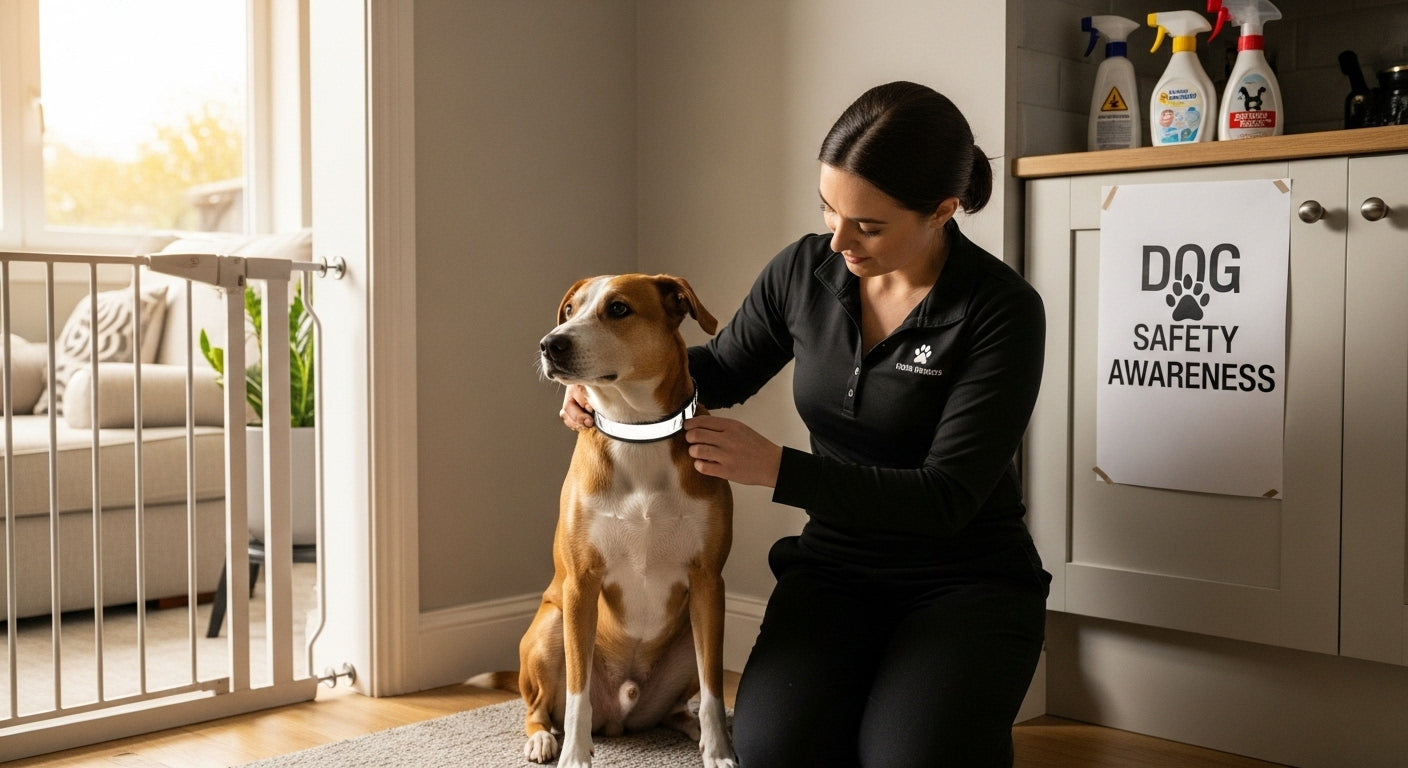Dog safety is a lot more complicated than just teaching your pup to sit or stay. Every year, over 4.5 million people in the US are bitten by dogs, with half of them being children. Most folks think accidents like these are just bad luck or a sign of an unruly pet, but the real issue often starts with us missing critical warning signs or risks right under our noses. The way we think about dog safety awareness could change everything you thought you knew about living with dogs.
Table of Contents
- What Is Dog Safety Awareness And Its Importance?
- The Key Risks To Dogs And How To Mitigate Them
- Understanding Dog Behavior And Body Language For Safety
- The Role Of Training In Promoting Dog Safety Awareness
- How Environment Affects Dog Safety And Well-Being
Quick Summary
| Takeaway | Explanation |
|---|---|
| Recognize dog’s stress signals. | Understanding body language helps prevent potential aggressive interactions. Look for signs like lip licking and head turning. |
| Create a safe environment. | Proactively manage hazards, including toxic substances and extreme weather, to ensure your dog’s safety at home and outdoors. |
| Invest in ongoing training. | Training should focus on emotional regulation and communication, reducing risks by teaching dogs how to respond to different situations. |
| Monitor health regularly. | Regular veterinary check-ups assist in identifying underlying health issues that could compromise your dog’s well-being. |
| Encourage positive socialization. | Proper socialization supports your dog’s adaptability and helps diminish behavioral problems, improving interactions with other dogs and people. |
What is Dog Safety Awareness and Its Importance?
Dog safety awareness is a comprehensive approach to understanding, preventing, and managing risks associated with dog interactions, ownership, and environmental challenges. It encompasses a holistic strategy that protects both dogs and humans through proactive education, responsible handling, and strategic prevention techniques.
Understanding the Core Principles
At its foundation, dog safety awareness goes beyond basic training and involves recognizing potential hazards, understanding canine behavior, and implementing protective strategies. The primary goal is creating a safe environment where dogs can thrive while minimizing risks to themselves and those around them. Learn more about essential safety guidelines for dog owners.
Key components of dog safety awareness include:
- Recognizing potential stress triggers in dogs
- Understanding body language and communication signals
- Implementing preventive health and training measures
- Creating safe physical environments
Why Dog Safety Awareness Matters
According to the Centers for Disease Control and Prevention, understanding dog safety is crucial for preventing potential health risks and ensuring positive interactions. Dogs can become unpredictable when scared, stressed, or uncomfortable, which may lead to aggressive behaviors or accidents.

By developing comprehensive dog safety awareness, owners can:
- Reduce the likelihood of dog bites and injuries
- Protect vulnerable populations like children and elderly
- Promote positive socialization and behavioral training
- Enhance overall quality of life for both dogs and humans
Ultimately, dog safety awareness is not just about rules but about building mutual understanding, respect, and trust between dogs and their human companions.
The Key Risks to Dogs and How to Mitigate Them
Dogs face numerous environmental, health, and social risks that require proactive identification and strategic management. Understanding these potential dangers allows owners to create safer, more protective environments for their canine companions.
Environmental and Physical Hazards
Environmental risks represent significant challenges for dogs, ranging from extreme weather conditions to potential toxic exposures. Our comprehensive guide on improving dog safety provides detailed strategies for minimizing these threats.
Key environmental risks include:
- Extreme temperature variations
- Toxic household chemicals
- Unsafe outdoor terrain
- Potential wildlife encounters
- Hazardous landscaping materials
Health and Behavioral Risks
According to the American Veterinary Medical Association, dogs are susceptible to various health challenges that require consistent monitoring and preventive care.
Critical health and behavioral risks include:
- Undiagnosed medical conditions
- Psychological stress and anxiety
- Potential infectious diseases
- Improper socialization challenges
- Nutritional deficiencies
Mitigation Strategies
Effective risk mitigation involves a multifaceted approach that combines medical care, environmental management, and proactive training. Dog owners must develop comprehensive strategies that address potential threats through consistent observation, professional guidance, and adaptive interventions.
Successful risk reduction requires understanding individual dog needs, maintaining regular veterinary consultations, implementing systematic safety protocols, and remaining vigilant about emerging potential hazards.
Below is a table summarizing key environmental and health risks that dogs may face, along with examples from the article to clarify each risk type.
| Risk Category | Examples/Details |
|---|---|
| Environmental Hazards | Extreme temperatures, toxic chemicals, unsafe terrain, wildlife encounters, hazardous landscaping |
| Health Risks | Undiagnosed medical issues, infectious diseases, nutritional deficiencies |
| Behavioral/Social Risks | Psychological stress, anxiety, improper socialization |
| Physical Obstacles (Indoors) | Insufficient space, physical barriers |
| External Challenges | Urban infrastructure, unpredictable terrain, exposure to wildlife and contaminants |

Understanding Dog Behavior and Body Language for Safety
Dog behavior and body language represent complex communication systems that allow canines to express emotions, intentions, and potential discomfort. Understanding these subtle signals is crucial for preventing misunderstandings and potential aggressive interactions between dogs and humans.
Decoding Canine Communication Signals
Dogs communicate through intricate combinations of physical postures, facial expressions, tail movements, and vocal sounds. Learn more about recognizing dog alert signals to enhance your understanding of their emotional states.
Key communication indicators include:
- Ear positioning and movement
- Tail height and wagging patterns
- Facial muscle tension
- Eye contact and gaze direction
- Overall body posture and weight distribution
Recognizing Stress and Anxiety Signals
According to Purdue University’s Canine Welfare Science program, dogs exhibit specific behavioral cues that indicate stress, fear, or potential defensive responses. These signals serve as critical warning signs that humans must learn to interpret accurately.
Important stress indicators include:
- Lip licking or tongue flicking
- Avoiding direct eye contact
- Turning head away
- Tucking tail
- Displaying whale eye (showing whites of eyes)
Promoting Safe Interactions
Safe dog interactions require understanding and respecting individual canine boundaries. This involves recognizing when a dog feels uncomfortable, reading their emotional state, and responding appropriately to prevent potential negative encounters.
Successful communication with dogs demands patience, observation, and a commitment to understanding their unique language.
This table breaks down core canine communication signals mentioned in the article, offering explanations to help readers better interpret dog body language for safety.
| Communication Signal | Description |
|---|---|
| Ear Positioning | Indicates alertness, interest, or potential stress |
| Tail Height and Wagging | Reflects confidence, anxiety, or excitement |
| Facial Muscle Tension | Shows emotional state, stress, or discomfort |
| Eye Contact and Gaze | Direct stare can be a threat, avoidance signals stress |
| Body Posture | Reveals overall mood and intentions |
The Role of Training in Promoting Dog Safety Awareness
Training represents a fundamental mechanism for establishing safe, predictable interactions between dogs and humans. By implementing structured learning approaches, owners can significantly reduce potential risks and create environments of mutual understanding and respect.
Foundational Training Principles
Effective dog safety training goes beyond basic obedience, focusing on developing communication skills, emotional regulation, and situational awareness. Explore our comprehensive guide to safety training techniques to understand the nuanced approaches for different dog personalities.
Key foundational training principles include:
- Consistent positive reinforcement
- Clear communication strategies
- Gradual skill progression
- Individualized learning approaches
- Emotional intelligence development
Behavioral Modification Strategies
According to the American Kennel Club, systematic training helps dogs develop critical impulse control and adaptive behaviors that enhance overall safety. This process involves understanding triggers, managing potential stress responses, and teaching alternative behavioral patterns.
Critical behavioral modification techniques include:
- Desensitization to potential stressors
- Counter-conditioning negative associations
- Teaching calm response mechanisms
- Developing reliable recall skills
- Managing environmental interactions
Long-Term Safety Integration
Successful dog safety training is not a short-term goal but a continuous, evolving process. It requires ongoing commitment, patience, and an understanding that each dog represents a unique learning entity with individual needs, temperaments, and potential challenges.
By investing in comprehensive training programs, owners create a foundation of trust, communication, and mutual respect. This approach transforms dog safety from a reactive measure to a proactive, integrated lifestyle that protects both the animal and its human companions.
How Environment Affects Dog Safety and Well-Being
The environment plays a critical role in determining a dog’s physical health, psychological stability, and overall safety. Complex interactions between physical spaces, sensory stimuli, and potential hazards directly impact a dog’s capacity to feel secure and thrive.
Indoor Environmental Considerations
Domestic environments represent the primary context where dogs experience safety and comfort. Check out our guide to maintaining dog safety outdoors and at home to understand comprehensive environmental management strategies.
Key indoor environmental factors include:
- Temperature and humidity levels
- Presence of toxic substances
- Noise and sound intensity
- Available space for movement
- Potential physical obstacles
External Environmental Challenges
According to the Centers for Disease Control and Prevention, external environments present numerous potential risks that can compromise canine safety and well-being. These risks range from environmental contaminants to potential interactions with unfamiliar animals and terrain.
Significant external environmental challenges include:
- Extreme weather conditions
- Exposure to wildlife
- Potential chemical contaminations
- Unpredictable terrain
- Urban infrastructure complexities
Holistic Environmental Management
Successful environmental management for dogs requires a proactive, comprehensive approach that anticipates potential risks and creates protective strategies. This involves understanding individual dog characteristics, recognizing specific environmental sensitivities, and implementing adaptive safety protocols.
By developing a nuanced understanding of how environments interact with canine physiology and psychology, owners can create spaces that not only protect their dogs from harm but also promote psychological well-being, emotional stability, and overall quality of life.
Transform Dog Safety Awareness Into Real Results With iPupPee
Are you concerned about understanding your dog’s signals, managing their safety, and responding to stressful situations? The article highlights the importance of reading canine body language and using proactive strategies for protection, but putting these lessons into practice can still feel overwhelming. If you live alone, have a service dog, an elderly companion, or care for a rescue, taking safety from theory to action matters more than ever.

iPupPee bridges this gap. Our innovative alert device empowers your dog to communicate their needs instantly with a tap of a paw, giving you real-time insight into their comfort and safety—no more guesswork, just direct understanding and prevention tailored to the challenges described in the article. Discover how the iPupPee device supports independence, reduces accidents, and fosters peace of mind for every dog and owner. Unleash a safer, more connected relationship with your dog. Visit iPupPee today and take the next step toward total dog safety awareness.
Frequently Asked Questions
What is dog safety awareness?
Dog safety awareness is a comprehensive strategy aimed at understanding, preventing, and managing risks associated with dog ownership and interactions. It includes education, responsible handling, and creating safe environments to protect both dogs and humans.
Why is understanding dog behavior important for safety?
Understanding dog behavior is crucial for preventing misunderstandings and aggressive interactions. Recognizing a dog’s body language and communication signals helps owners respond appropriately to their dog’s emotions, reducing the risk of accidents or injuries.
What are some common environmental hazards for dogs?
Common environmental hazards for dogs include extreme temperatures, toxic household chemicals, unsafe outdoor terrain, wildlife encounters, and hazardous landscaping materials. Owners should implement strategies to minimize these risks in their dogs’ environments.
How can training improve dog safety awareness?
Training improves dog safety awareness by fostering effective communication and emotional regulation. It helps dogs learn impulse control and adaptive behaviors, allowing for safer and more predictable interactions between dogs and humans.
Recommended
- The Importance of Dog Safety: What Every Owner Should Know in 2025 – iPupPee
- Top Safety Tips for Dog Owners: Essential Guidance for 2025 – iPupPee
- How to Improve Dog Safety at Home and Outdoors 2025 – iPupPee
- Safety Training for Puppies: Essential Guide for All Owners 2025 – iPupPee
- 10 Must-Have Dog Safety Products List for Every Owner
- Are Snake Plants Toxic to Dogs? Identifying Risks and Safety Measures - Lushy Gardens

